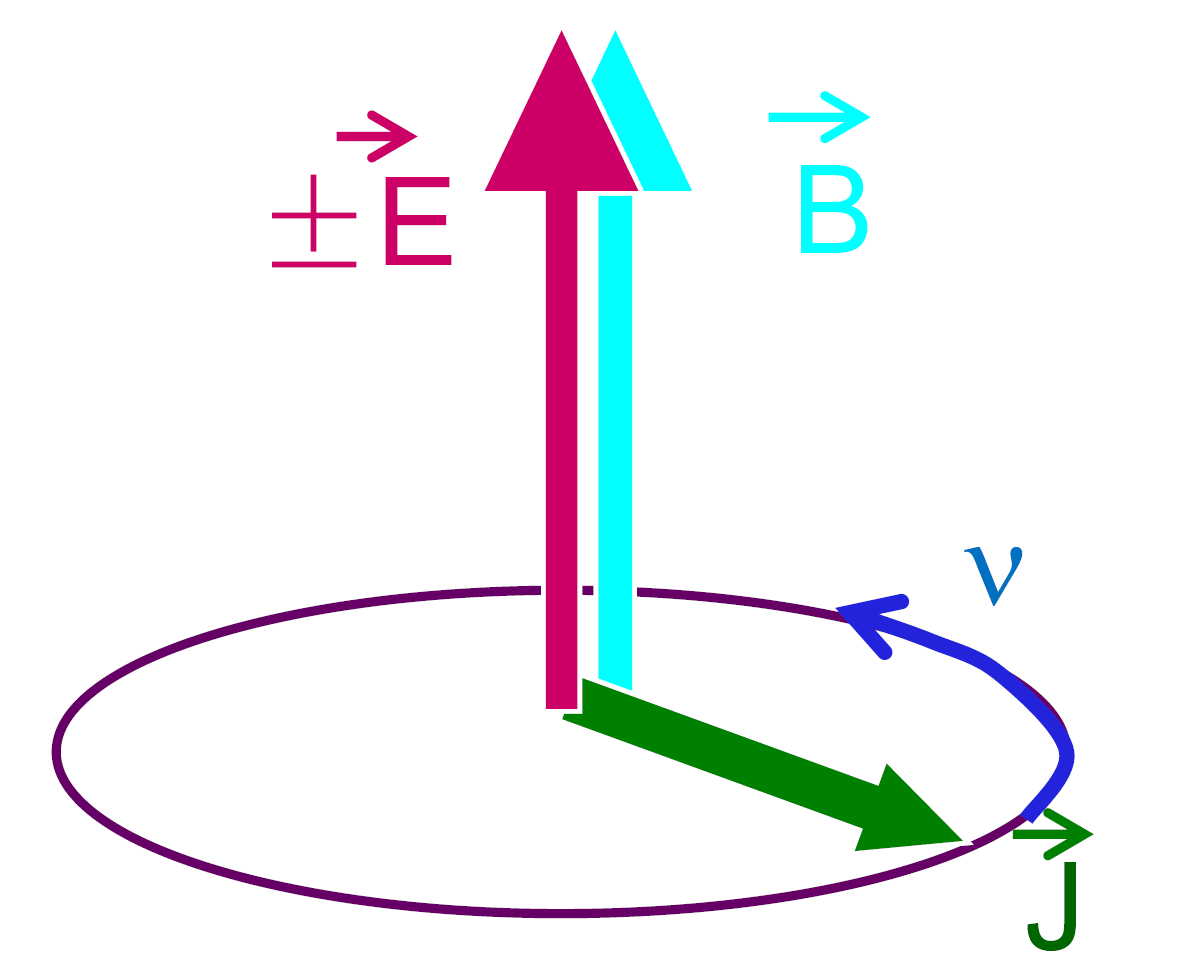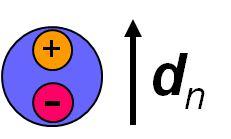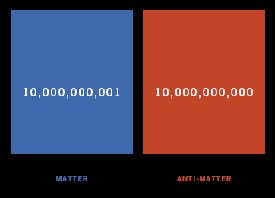The Neutron Electric Dipole Moment Experiment
What is an EDM?
| Neutron Electric Dipole Moment |
A bar magnet is an example of a "magnetic dipole" with a north pole at one end and a south pole at the other. Although the neutron has no net electric charge, it is made of positive and negative quarks. If the positive charges were slightly to one side and the negative charges were slightly to the other, it would create an "electric dipole". The "electric dipole moment", or EDM, is the product of the electric charges and the distance between them. The neutron EDM is usually given in e-cm, the electronic charge times the distance in cm.
Why measure the Neutron EDM?
| |
| Matter and Antimatter in the Early Universe |
Everything we see in the universe today is made of essentially only normal matter. When matter was created in the early universe, we would expect equal amounts of matter and antimatter, in which case it would have all annihilated by now, leaving only energy. Because matter is left over, it appears there was a small excees of matter over antimatter in the early universe. Based on the current ratio photons to baryons, there were of the order of 10,000,000,001 matter particles per 10,000,000,000 antimater particles. A big mystery in physics is what caused the asymmetry. The standard model does not explain the asymmetry, but there are extensions to the standard model that do. The exciting thing for us is that the same theories that explain the baryon asymmetry of the universe also predict an electric dipole moment for the neutron.
How to Measure the EDM
 | |
| A neutron with an Electric Dipole Momentprecesses at a different rate when theelectric field direction is reversed |
A neutron has both an angular momentum like a spinning top and a magnetic dipole moment like a bar magnet. When placed in a magnetic field, the neutron's spin axis prececesses about the direction of the magnetic field the same way that a spinning top precesses about the direction of gravity. If an electric field is applied in the same direction as the magnetic field, then, if the neutron has a non-zero electric dipole moment (EDM), it will make a difference in the precession frequency. By using a technique called "Ramsey Resonance" it is possible to make very precise measures of the precession frequency. A shift in the precession frequency when we reverse the electric field will indicate an EDM. Since the EDM is very small, such experiments use a weak magnetic field and a strong electric field to make the change as obvious as possible.


